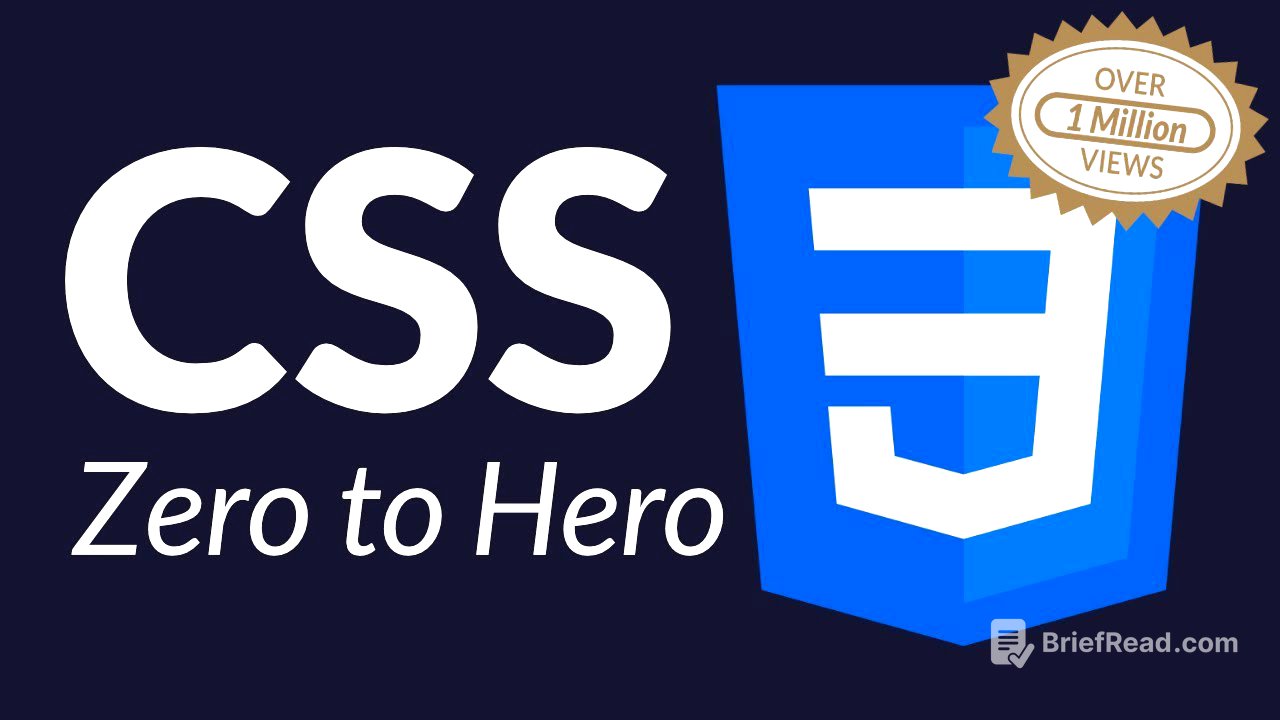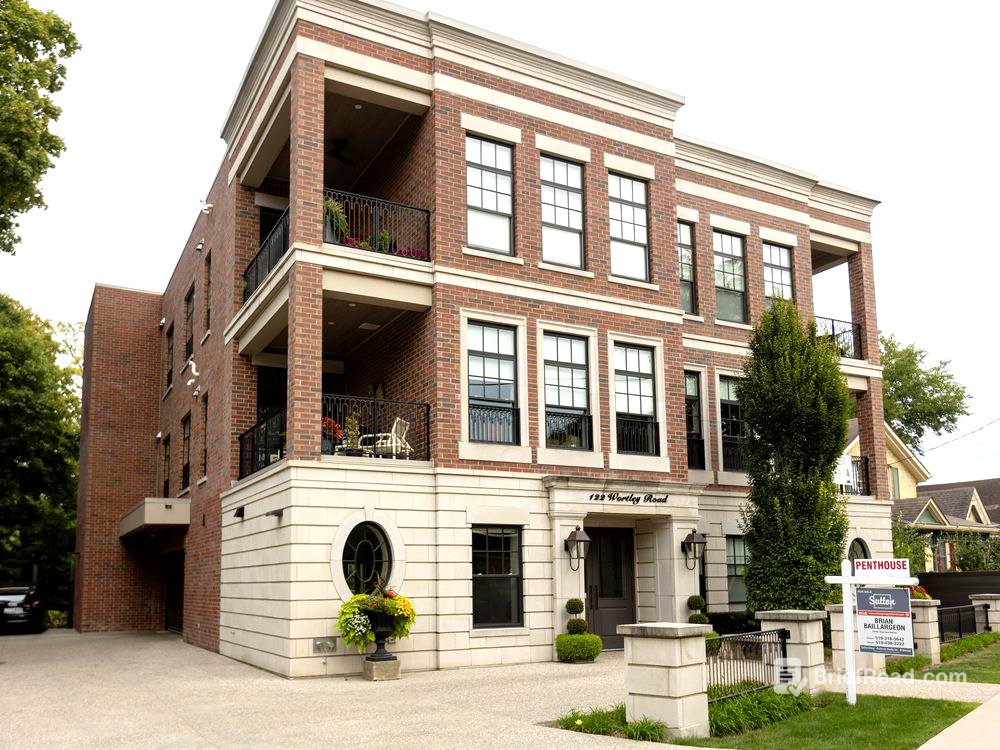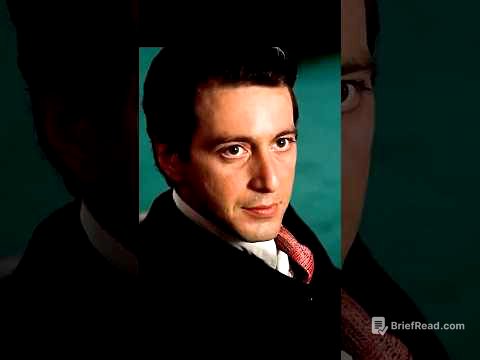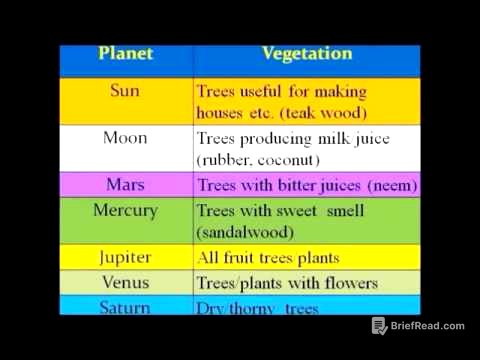TLDR;
This CSS Zero to Hero course provides a comprehensive guide to learning CSS from the ground up. It covers major CSS concepts through step-by-step lessons, practical examples, and coding exercises. The course includes styling a base website, creating grids and gradients, and working with custom fonts, colors, and backgrounds. It also features a final challenge to style a website from scratch, reinforcing learned skills.
- Comprehensive CSS learning from basic to advanced concepts.
- Practical application through styling a website and coding exercises.
- Focus on responsive design, animations, and modern layout techniques.
Course Introduction and Motivation [0:00]
The course aims to teach CSS from the ground up, covering major concepts step by step. It motivates learners by showcasing the transformation of a basic website using various CSS techniques, including grids, colors, gradients, custom fonts, and backgrounds. The course culminates in a challenge where learners style a website from scratch, applying all the skills they've acquired. This includes creating a responsive layout with animations. The course emphasizes understanding every line of code, making complex styling understandable.
Syllabus Overview [3:01]
The course is structured into sections, each ending with a 10-question multiple-choice quiz to reinforce learning. Active participation and practical application of skills are encouraged for better retention. The syllabus includes an introductory section for setting up the course environment, followed by an introduction to CSS theory and document linking. Subsequent sections cover selectors, properties, colors, text styling, layout fundamentals, Flexbox, CSS Grid, animations, and transitions. The course concludes with a final exam and a practical challenge to style a website from scratch.
Software and Project Files [19:29]
The course primarily uses Sublime Text as the recommended text editor for its color coding and formatting features. While Notepad can be used, Sublime Text is preferred for ease of development. Project files and code from each lecture are available on a GitHub repository, allowing learners to track progress and review changes. Those unfamiliar with Git can access lecture-specific changes directly on the GitHub page.
Introduction to CSS [25:38]
CSS, or Cascading Style Sheets, is used to style websites, providing visual flair and distinguishing modern sites from older ones. It works in conjunction with HTML, which provides the structure and content. CSS files are saved in the ".css" format and use selectors to target HTML elements for styling.
Creating and Linking a CSS Stylesheet [30:57]
To begin using CSS, a new CSS file is created in a dedicated directory and named "style.css". This file is then linked to the HTML document using a <link> tag within the <head> section. The rel attribute is set to "stylesheet", and the href attribute points to the CSS file's URL, ensuring the stylesheet is properly connected to the HTML page.
Testing Your CSS Stylesheet [34:50]
To test if a CSS stylesheet is correctly linked, a random, obvious property is added to the CSS file. If the property's effect is visible on the webpage, the stylesheet is working. For example, setting the background-color property to red can quickly confirm the connection.
CSS Selectors: Grabbing and Styling HTML Elements [42:15]
CSS selectors are used to target and style specific HTML elements. The element selector targets all elements of a specific type (e.g., <p>). The class selector targets elements with a specific class attribute, denoted by a dot prefix (e.g., .classname). The ID selector targets a unique element with a specific ID attribute, denoted by a hash symbol prefix (e.g., #idname).
Adding Classes and IDs to HTML Documents [49:47]
Classes and IDs are added to HTML elements to apply specific styles. The class attribute can be used multiple times on different elements, allowing for reusable styles. The id attribute should be unique within a document, targeting a single element. CSS selectors then reference these classes and IDs to apply the defined styles.
Understanding Specificity in CSS [1:00:16]
Specificity determines which CSS rule applies when multiple rules target the same element. Inline styles have the highest specificity, followed by IDs, classes, and then element selectors. Classes are reusable and can be applied to multiple elements, while IDs should be unique and used for specific, one-time styling.
Pseudo Selectors: Styling Based on State [1:17:28]
Pseudo-selectors are used to style elements based on their state or position. Common pseudo-selectors include :hover for styling when a user hovers over an element, :first-child for the first element within a parent, :last-child for the last element, :nth-child(n) for styling elements based on their order, and :only-child for styling elements that are the only child of their parent. Anchor tags have specific pseudo-selectors like :link for unvisited links and :visited for visited links.
Advanced CSS Selectors [1:34:29]
Advanced CSS selectors include the adjacent sibling selector (element + element), which selects an element immediately following another, and the general sibling combinator (element ~ element), which selects all following siblings. The child selector (parent > child) targets direct children of an element, while the descendant selector (parent element) targets all descendants.
Attribute Selectors: Targeting Elements by Attributes [1:56:01]
Attribute selectors target HTML elements based on their attributes and values. The basic syntax is [attribute=value]. Additional selectors include [attribute^=value] for attributes starting with a value, [attribute$=value] for attributes ending with a value, and [attribute*=value] for attributes containing a value. Whitespace attribute selectors ([attribute~=value]) target elements with a specific class, and [attribute|=value] targets elements where the attribute is exactly equal to the value or starts with the value followed by a dash.
CSS Properties: The Building Blocks of Styling [2:14:28]
CSS properties are used to style HTML elements, consisting of a property name and a value, separated by a colon and ending with a semicolon. Properties define aspects like color, background, positioning, height, and width. The value specifies the type of change, such as color names, RGB codes, or pixel values.
The CSS General Rule: Structure and Syntax [2:17:42]
The CSS general rule consists of a selector, a CSS block enclosed in curly braces, and properties within the block. The selector targets HTML elements, and the properties define the styling. Each property includes a name, a colon, a value, and a semicolon. Multiple properties can be included within a single CSS block.
Coloring and Styling: Introduction [2:30:07]
Coloring is essential for modern website design, enhancing visual appeal. The course covers different color types, including CSS color codes, hex codes, and RGB codes. CSS color codes provide easy-to-use names, while hex and RGB codes offer more specific color options.
Applying Colors to Text [2:44:29]
Classes and IDs are added to HTML elements to apply specific styles. The color property is used to change text color, with values specified in hex or RGB codes. RGB codes are preferred for their flexibility, allowing easy manipulation of color components.
Background Colors: Adding Visual Depth [2:59:20]
Background colors are added using the background property, which accepts hex codes, RGB codes, or CSS color names. Applying background colors to the entire page or specific elements can enhance the visual appeal. Lighter background colors are often preferred for better readability.
Background Images: Adding Visual Interest [3:08:28]
Background images can be added using the background property with the url() function, which links to an image file either locally or from the internet. The background-image property can also be used. To ensure proper display, additional properties like background-repeat, background-position, and background-size may be needed.
Advanced Background Properties: Controlling Image Display [3:18:59]
The background-repeat property controls how a background image is repeated, with options like no-repeat, repeat, repeat-x, and repeat-y. The background-size property adjusts the size of the image, with values like cover to fill the entire element and contain to fit the image within the element while maintaining its aspect ratio.
RGBA Colors: Adding Transparency [3:33:27]
RGBA colors extend RGB by adding an alpha component, controlling transparency. The alpha value ranges from 0 (completely transparent) to 1 (fully opaque). This allows for creating subtle color effects and layering elements.
CSS Gradients: Smooth Color Transitions [3:39:27]
CSS gradients create smooth transitions between colors. Linear gradients transition colors in a straight line, while radial gradients transition colors from a central point. Linear gradients are created using the linear-gradient() function, specifying the direction (e.g., to right, to bottom) and color stops. Radial gradients are created using the radial-gradient() function, specifying the shape (e.g., ellipse, circle) and color stops.
CSS Units: Absolute vs. Relative [4:05:52]
CSS units define the size and dimensions of elements. Absolute units (e.g., centimeters, millimeters, inches, pixels) provide fixed sizes, while relative units (e.g., percentages, em, vw, vh) scale relative to other elements or the viewport. Pixels, though technically absolute, scale based on device DPI. Relative units are preferred for responsive designs.
Text Manipulation: Styling Text Elements [4:28:17]
Text manipulation involves styling text elements using properties like text-decoration (underline, overline, line-through, none) and text-transform (uppercase, lowercase, capitalize). The text-align property controls text alignment (left, right, center, justify).
Font Properties: Enhancing Text Appearance [4:43:41]
Font properties control the appearance of text. font-size sets the text size, font-weight sets the boldness, and font-style sets the italicization. These properties enhance the visual presentation of text elements.
Font Families: Choosing the Right Typeface [4:57:14]
Font families are collections of fonts with similar characteristics. Main font families include serif, sans-serif, and monospace. The font-family property specifies the font, with fallback options for browser compatibility.
External Fonts: Expanding Your Options [5:09:43]
External fonts can be imported from services like Google Fonts. The process involves linking the font stylesheet in the HTML document and specifying the font family in the CSS. Fallback fonts should be included to ensure readability if the external font fails to load.
CSS Layout: Introducing the Box Model [5:34:11]
CSS layout involves controlling the positioning and spacing of elements. The box model is a fundamental concept where every element is treated as a box with content, padding, border, and margin layers. Padding adds space around the content, borders create a visible separation, and margins add space between the element and other elements.
Content Resizing: Controlling Element Dimensions [5:41:48]
Content resizing involves setting the height and width of elements. Absolute units (pixels) are used for height, while relative units (vw, percentage) are preferred for width to ensure responsiveness. Chrome's Inspect tool allows for testing layouts on different devices.
Borders: Adding Visual Structure [5:53:10]
Borders add visual structure to elements, with properties for size, style (solid, dotted, dashed, double), and color. Borders help visualize the box model and separate content from surrounding elements.
Margin and Padding: Spacing and Positioning [6:07:14]
Margin and padding control spacing around elements. Padding adds internal space between the content and border, while margin adds external space between the element and other elements. Shorthand properties allow for setting values for all sides at once.
Float and Display: Controlling Element Flow [6:19:25]
Float and display control how elements flow on the page. Block-level elements (e.g., <p>, <div>) take up the full width and start on a new line, while inline elements (e.g., <span>, <a>) flow within the text. The float property positions elements to the left or right, and the display property changes the display type (e.g., none, inline-block).
CSS Flexbox: Introduction to Flexible Layouts [6:24:05]
Flexbox is a CSS layout model that provides an efficient way to align and distribute space among items in a container. It consists of a flex container (parent element) and flex items (child elements). Flexbox is used for creating responsive layouts and aligning elements in a flexible manner.
Creating a Flex Container [6:25:35]
A flex container is created by setting the display property to flex on a parent element. This activates the flex layout for its child elements, allowing for easy alignment and distribution of space.
Flex Direction and Wrap: Controlling Item Flow [6:26:33]
The flex-direction property specifies the direction of flex items (row or column), and the flex-wrap property controls whether items wrap to a new line or column when they exceed the container's size. These properties are essential for creating responsive layouts.
Justify Content and Align Items: Aligning Flex Items [6:29:43]
The justify-content property aligns flex items horizontally within the container, with values like flex-start, flex-end, center, space-between, and space-around. The align-items property aligns flex items vertically, with values like flex-start, flex-end, center, baseline, and stretch.
Flex Item Order: Changing Item Positions [6:30:35]
The order property changes the position of flex items within the container. By assigning numerical values to the order property, items can be rearranged without altering the HTML structure.
Flex Grow, Shrink, and Basis: Controlling Item Size [6:32:13]
flex-grow determines how much an item will grow relative to other items in the flex container. flex-shrink determines how much an item will shrink relative to other items. flex-basis specifies the initial size of the item before the remaining space is distributed.
The Flex Shorthand: Streamlining Size Properties [6:35:41]
The flex property is a shorthand for setting flex-grow, flex-shrink, and flex-basis in one declaration. This simplifies the code and makes it easier to manage flex item sizing.
Align Self: Individual Item Alignment [6:37:13]
The align-self property overrides the align-items property for individual flex items, allowing for custom vertical alignment. Values include flex-start, flex-end, and center.
Grid vs. Flexbox: Choosing the Right Layout Tool [6:39:27]
CSS Grid and Flexbox are both layout models, but they differ in their approach. Flexbox is primarily for one-dimensional layouts, focusing on either rows or columns, while Grid is for two-dimensional layouts, providing tools for both width and height. Grid offers more manual control over the layout.
Creating a Grid Container [6:53:48]
A grid container is created by setting the display property to grid on a parent element. This activates the grid layout, allowing for the creation of structured two-dimensional layouts.
Grid Template Columns and Rows: Defining Grid Structure [6:54:15]
The grid-template-columns and grid-template-rows properties define the number and size of columns and rows in a grid layout. Values can be specified in pixels, percentages, or using the auto keyword for even distribution.
Justify Content and Align Content: Aligning Grid Items [7:02:13]
The justify-content property aligns grid items horizontally within the container, with values like start, end, center, space-around, and space-evenly. The align-content property aligns grid items vertically, using similar values and space-between.
Column and Row Gaps: Adding Spacing to Grids [7:16:43]
The grid-column-gap and grid-row-gap properties specify the spacing between columns and rows in a grid layout. The shorthand grid-gap property sets both values at once.
Grid Lines: Positioning Items Precisely [7:21:19]
Grid lines are used to position items within a grid. The grid-column and grid-row properties specify the start and end lines for an item, allowing it to span multiple columns or rows. The span keyword can be used to define the number of tracks an item should occupy.
Grid Area: A Shorthand for Positioning [7:36:49]
The grid-area property is a shorthand for specifying the row start, column start, row end, and column end lines in one declaration. This simplifies the code and makes it easier to manage grid item positioning.
CSS Transitions: Adding Smoothness to Interactions [7:47:31]
CSS transitions create smooth changes in property values over a specified duration. The transition property is a shorthand for transition-property, transition-duration, transition-timing-function, and transition-delay. Common timing functions include ease, linear, and ease-in-out.
CSS Transforms: Manipulating Element Appearance [8:09:18]
CSS transforms alter the appearance of elements using functions like translate() for moving elements, scale() for resizing, and rotate() for rotating. Skew transformations (skewX(), skewY()) distort elements along the x and y axes. The matrix() function combines multiple transformations into one.
CSS Animations: Creating Dynamic Effects [8:28:15]
CSS animations create dynamic effects by defining keyframes that specify the changes in property values over time. The @keyframes rule defines the animation, and properties like animation-name, animation-duration, animation-timing-function, animation-delay, animation-iteration-count, and animation-direction control the animation's behavior.
CSS Challenge: Styling a Website from Scratch [9:03:19]
The course culminates in a challenge to style an unstyled website using the learned CSS techniques. The challenge involves applying coloring, layout, grid, Flexbox, and animations to revamp the website. A solution video is provided for reference.
Course Conclusion and Next Steps [9:03:19]
After completing the course, learners should have proficiency in HTML5 and CSS3, enabling them to style websites with creative freedom. Next steps include learning JavaScript, exploring front-end frameworks (React, Vue.js), and considering back-end technologies (Node.js, Python, PHP) for full-stack development. Continuous learning and staying updated with new CSS features are encouraged.









